Early Verdict
Poor dust filter design and a paucity of included fans justify the Bitfenix Aurora’s exceptional price. Buyers who were planning to add their own fans will still find a glass-paneled case bargain, as long as they can tolerate the dust filter inconveniences.
Pros
- +
Lowest-priced case to include tempered-glass side panels
- +
Great manufacturing quality
- +
Four USB Ports
- +
Integrated SSD Lighting Controller
- +
Supports dual two-by-140mm radiators
Cons
- -
Not enough included fans for mainstream air-cooled configurations
- -
Built-in front-panel dust filter will require frequent compressed-air cleaning
Why you can trust Tom's Hardware
Introducing The Bitfenix Aurora
Glass might not be very expensive, but it’s far from cheap. Shipping from the manufacturer to the reseller plays a huge role in consumer prices since glass is both heavy and fragile. That’s probably why the cheapest glass-sided case we’ve tested to date has cost $150, in spite of its rather mundane understructure. Bitfenix radically undercuts that competitor with its $100 Aurora.
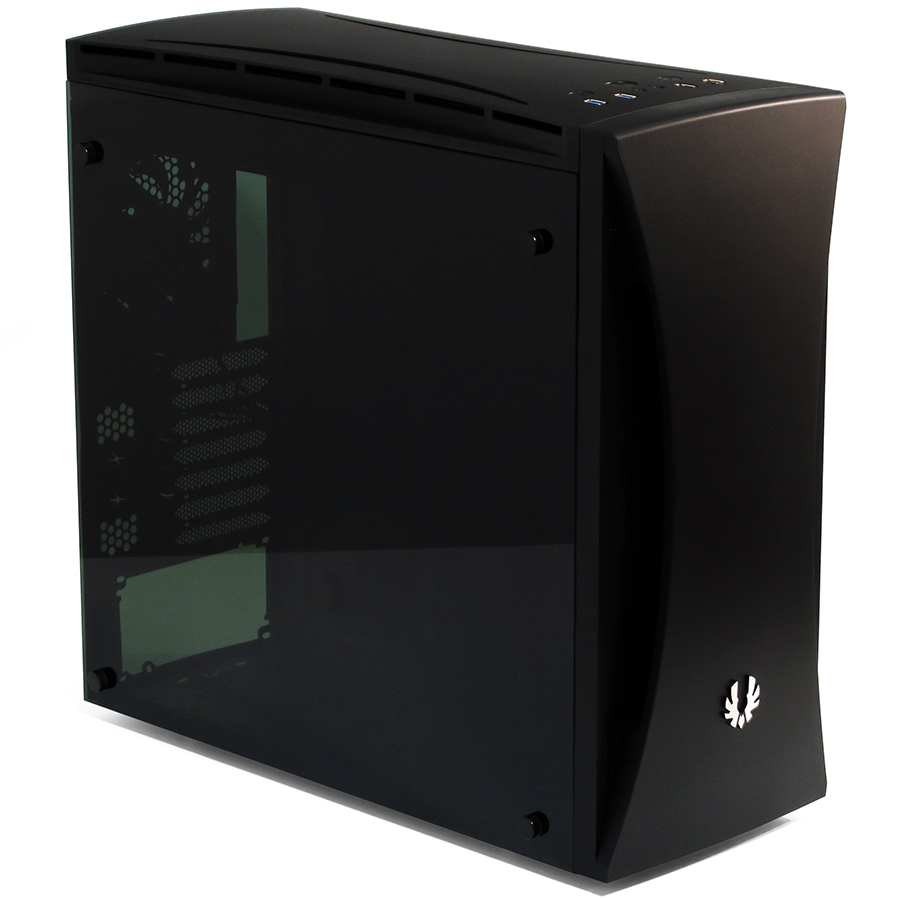
At this price, Aurora buyers probably won’t be surprised to find a mainstream chassis under those up-market sides. Classy touches on the cheaper parts include an arched grill cover on the front panel along with slots and slits in the top panel to emulate the front panel’s design.
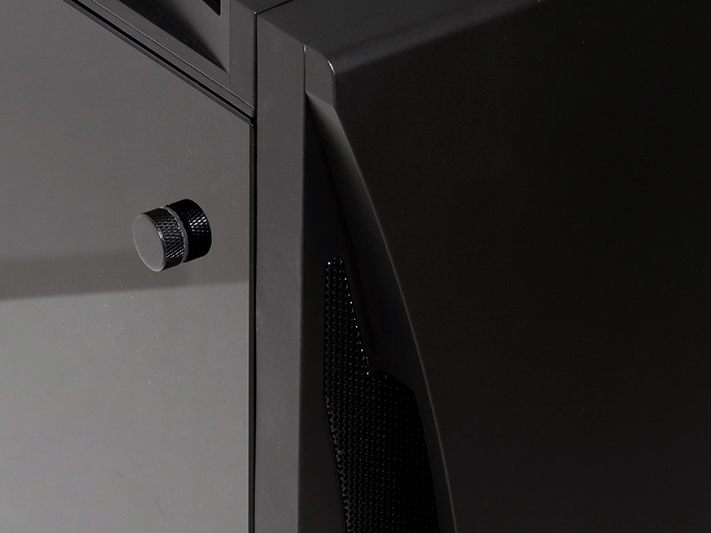
Bitfenix loads the front panel port section with both USB 3.0 and USB 2.0 ports, headset jacks, and an LED controller that also sets the Aurora apart from many lower-cost units.

Exemplary manufacturing quality enhances the illusion that this might be a high-end case, but small things like the front dust filter that’s built into the fan grill assembly make it impossible to forget that this would be a $70 case if not for the glass.
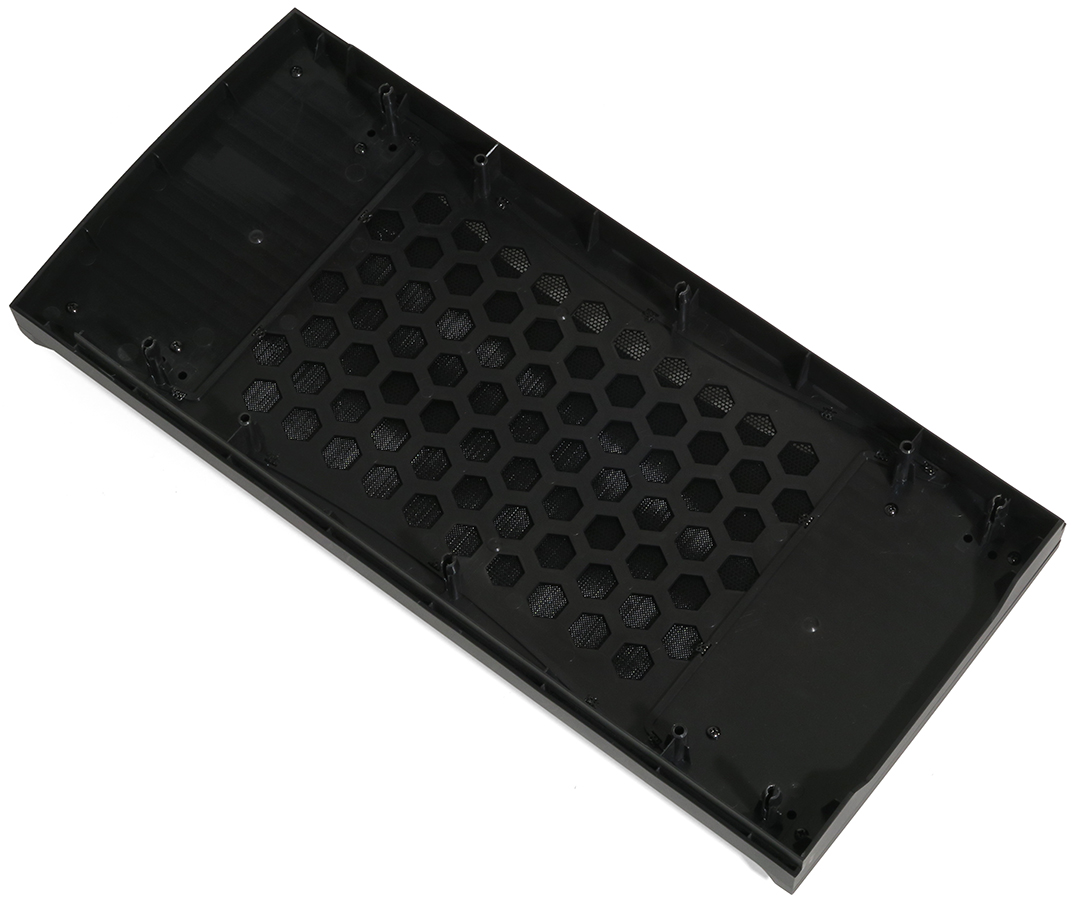
A very small power supply filter that’s only accessible by lifting the rear of the Aurora case and bending the filter away from its locking tab similarly reminds us that this is an inexpensive case with a few upscale features.

The Aurora rear panel features the ATX-standard seven expansion slots, a pair of rubber grommets for external radiator coolant line ingress and egress, and a 120mm fan set on a grill that also supports 92mm fans. A big unexpected feature of the right side panel is that the tinted glass is painted flat black on the inside, to conceal cables.
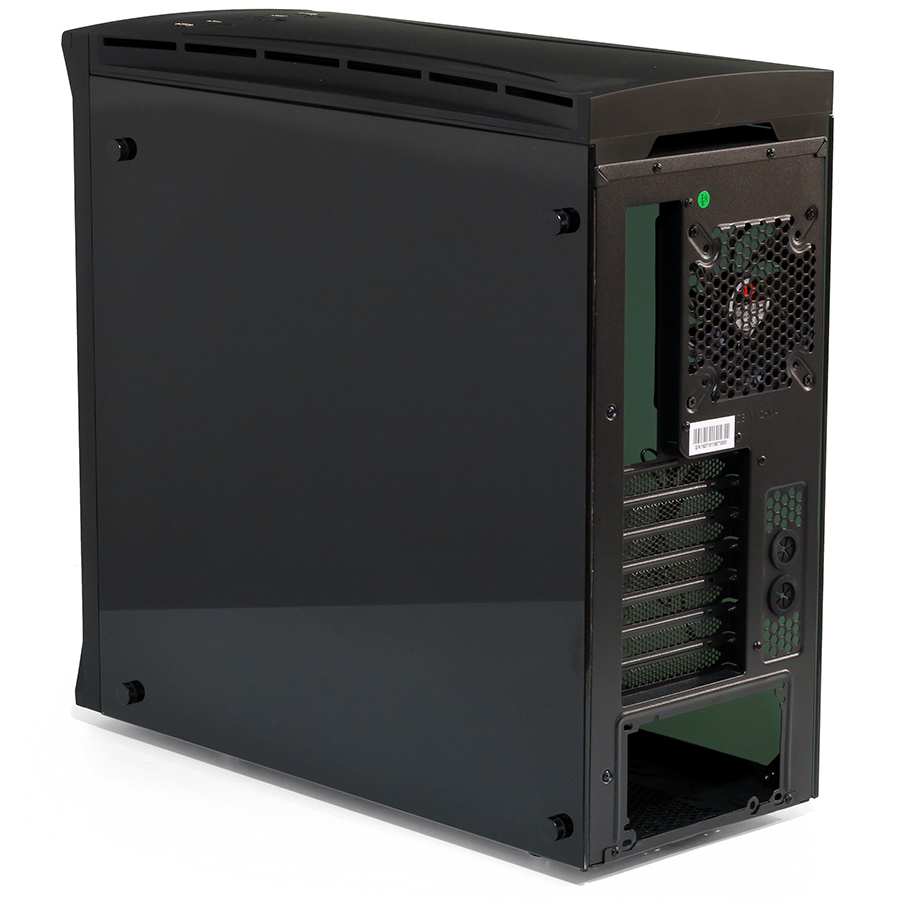
MORE: Best Deals
MORE: Hot Bargains @PurchDeals
The Bitfenix Aurora's Other Half
Inside we find enough space for a 10.9”-deep motherboard along with cable passages that are suitably placed to fit oversized boards. As nice as it is to have all that extra space, advertising it has become a problem since motherboard manufacturers have begun mislabeling their 10.6”-deep boards as EATX. The problem is that a case must support up to 13”-deep motherboards and have a fourth column of standoffs to carry the EATX label, and motherboard manufacturers haven’t figured out what else to call a far-less-oversized ATX part. The Aurora thus becomes yet another case with more than enough space to fit the EATX-labeled motherboards most popular with overclocking and gaming enthusiasts, but not enough space to actually carry the EATX label.
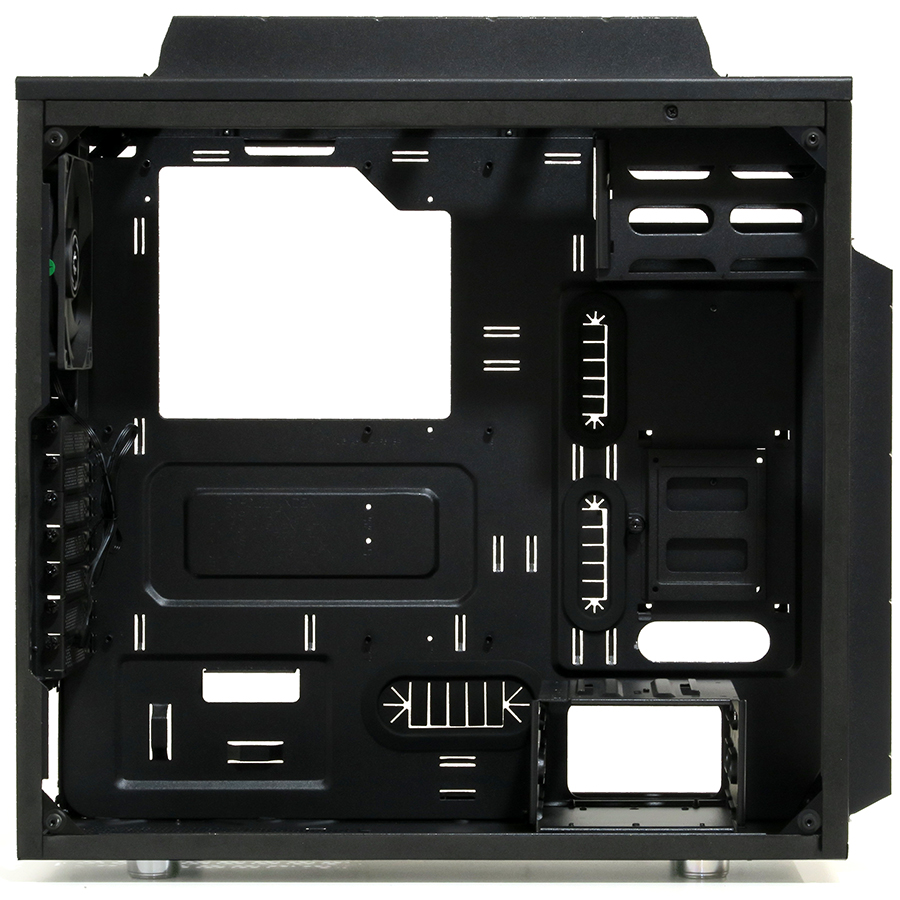
One of the SSD trays is found at the front of the Aurora’s motherboard tray, seen above. A pair of removable drive cages above and below it hold up to four 3.5” hard drives on old-fashioned plastic rails, at two drives per cage.
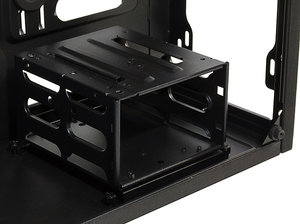

The Aurora has a reasonable amount of room behind the motherboard tray for cables, along with two more SSD trays and an LED controller that interfaces the previously-mentioned front panel button.
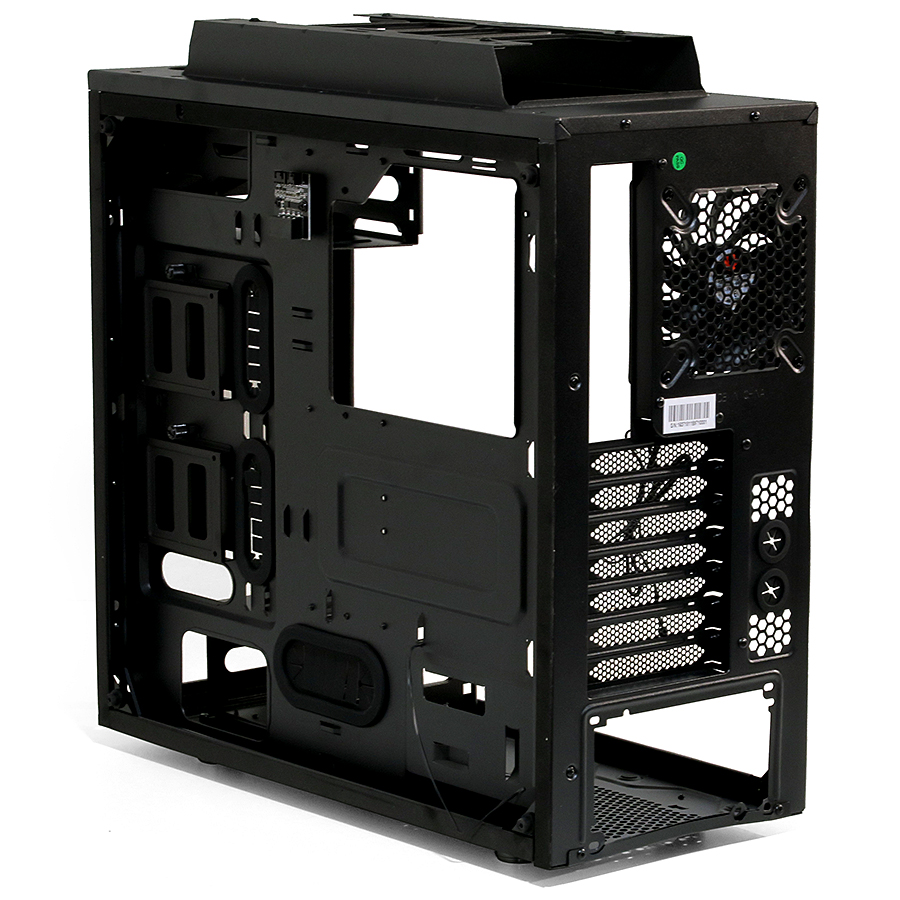


The Aurora is probably tall enough to fit a three-fan radiator, but isn’t cut for one. Instead we find top-panel and front-panel mounts for two-by-120mm and two-by-140mm radiators. Rolled edges that surround the ends of the radiator holes prevent larger units from being installed between the interior and exterior panels.

The large empty space above the front radiator mount otherwise looks like a great place for the tank of an integrated-reservoir radiator, and builders proficient with cutting tools may want to modify that rolled edge to fit theirs.
MORE: Best Cases
MORE: All Case Content
-
Rookie_MIB It would have been interesting to see how the addition of one or two fans affected the temps and the ability to run at a slower speed.Reply -
cliffro My current case being the exception rather than the rule, I usually buy better case fans to replace and or supplement the ones included. My Phanteks Primo came with 5 140mm fans that work very well with minimal noise.Reply
But every other case before it came with minimal fans. The most being either 2 or 3 on my HAF XM.
But hey, I just buy what I like feature wise and make any needed adjustments after.
Again my current case being the exception. I only added some Bit Fenix LEDs to it, and left it pretty much as is. -
jdlech With these glass cases, I'm starting to think about a local artist I know. He's very good with just about everything I've seen him do.Reply
I'm thinking I would really like the results if I bought a glass case and handed it to him for about 4 months and a couple hundred dollars. I'll bet he could do some awesome acid etching and back lighting. -
Dysphemism Reply18841949 said:With these glass cases, I'm starting to think about a local artist I know. He's very good with just about everything I've seen him do.
I'm thinking I would really like the results if I bought a glass case and handed it to him for about 4 months and a couple hundred dollars. I'll bet he could do some awesome acid etching and back lighting.
It shouldn't take that long or cost very much. Etching takes a few hours and is cheap to do and not particularly high effort. -
the nerd 389 It would be nice to see these cases tested with hardware that they were designed for. I suspect the landscape would change significantly if these cases that were designed for water cooling were tested with a water cooler.Reply
The noise and cooling performance would obviously change, but just as important is the difference in installation convenience. Installing a water cooling setup is quite different than installing a single tower air cooler, and there are significantly more issues that could come up.
Tom's Hardware has plenty of information on closed loop water coolers that would be suitable for such a test. The price difference between the cooling systems could easily be accounted for in the value comparisons.
Regardless, I seriously question results that are derived from a setup that you'd never actually use. -
jdlech Reply
It probably won't cost that much, but I prefer to give him lots of time for inspiration. The actual work would only take a few hours, depending on the number of colors he uses. Acid etching can be a lot like painting with watercolors. But it's more important that he be inspired - and god knows how long that might take. It's best to just hand it to him and let him do it when he does it.18841972 said:It shouldn't take that long or cost very much. Etching takes a few hours and is cheap to do and not particularly high effort.
artists.... you know.... -
Crashman Reply
I'd use the dual-tower version of that CPU cooler in a system like this, so the only difference you're seeing are that the numbers are slightly higher. The consistency is still there.18842178 said:It would be nice to see these cases tested with hardware that they were designed for. I suspect the landscape would change significantly if these cases that were designed for water cooling were tested with a water cooler.
The noise and cooling performance would obviously change, but just as important is the difference in installation convenience. Installing a water cooling setup is quite different than installing a single tower air cooler, and there are significantly more issues that could come up.
Tom's Hardware has plenty of information on closed loop water coolers that would be suitable for such a test. The price difference between the cooling systems could easily be accounted for in the value comparisons.
Regardless, I seriously question results that are derived from a setup that you'd never actually use.
